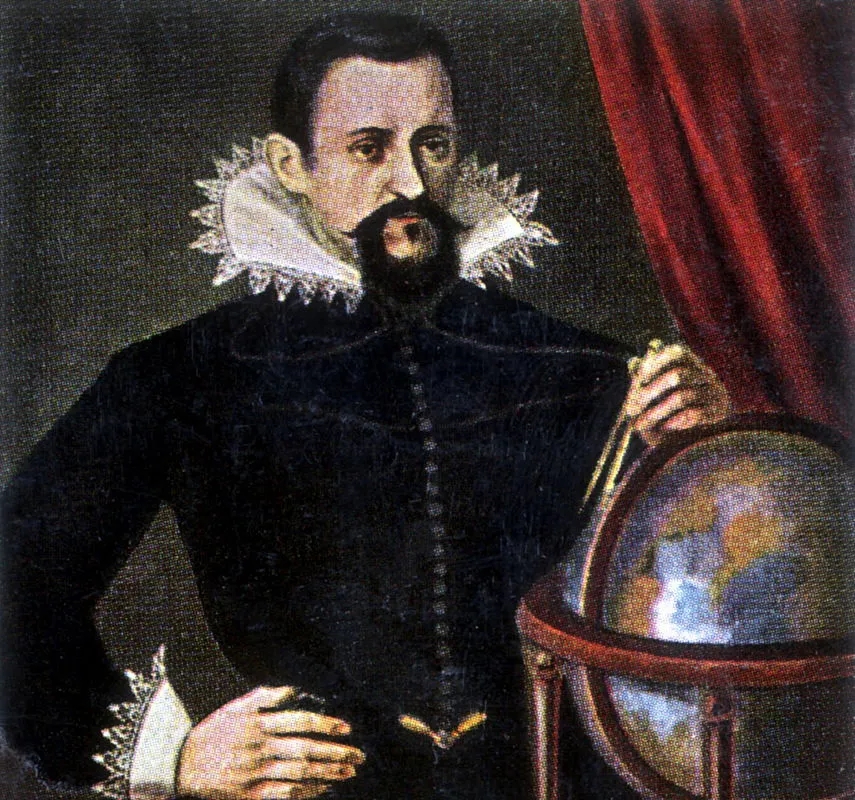Johannes Kepler
“The diversity of the phenomena of Nature is so great, and the treasures hidden in the heavens so rich, precisely in order that the human mind shall never be lacking in fresh nourishment”-Kepler

HISTORICAL ASTRONOMER
One of the most fascinating and revolutionary astronomers in history was Johannes Kepler. He was born in Weil der Stadt, Württemberg on December 27, 1571 and passed away in Regensburg on November 15, 1630. Kepler derived many important ideas about the universe from mathematical rational, and he was also a very religious man. He founded revolutionary ideas about the universe and established Kepler’s three laws, which are very prevalent and used in astronomical research to this day. The three laws that Kepler founded are as follows: 1) With the sun at the center of the universe, the surrounding planets orbit elliptically, 2) The imaginary line connecting any given planet to the sun covers equal area during equal time intervals at any point, and 3) there is a proportional relationship between period and the semi major axis (P2=A3). In other words, when a planet orbits close to the sun, the faster the planet will travel due to the gravitational pull of the sun. However, the further the planet is, the more time it will travel. This theory further evolved with Newton where he established a modern day equation to the third law.
HISTORICAL EVENTS
There were numerous historical events that occurred between 1570 and 1630 that played a large role in both scientific and societal advancements. in 1590 the first compound microscope was invented by both Hans and Zacharias Janssen. Although this was a simplistic model of the microscope and had only 9X amplification, it transformed scientific discoveries, and the microscope has evolved since then and has led to astronomical advancements in medicine and research. Additionally, another historical event that occurred between this time period was the signing of Edict of Nantes in April 13, 1598. This document was a treaty to put an end to the war between Catholics and Protestants in France in the late 1500s, in which it granted protestants civil liberty in France under King Henry IV.
HISTORICAL FIGURE
One important historical figure that lived during the time of Johannes Kepler was John Smith, and he was born on January 6, 1580 in Lincolnshire, England and died on June 21, 1631. He became president of Jamestown Colony and he established the first major colony in America which would ultimately lead to the English establishing a total of thirteen colonies from the 1600s to 1700s.
REFLECTION
When I took Physics in high School one of my most favorite things to do was to derive Kepler’s third law (Newton’s version). Even though I enjoyed doing this, I had no idea the depth of what Kepler did and discovered during his time alive and all of the other important things happening in the world. Not only were there societal, political, and religious revolutions occurring throughout the world, but there were also significant technological advancements as well, ranging from analyzing the smallest, molecular aspects of our world to studying the grandness of the universe. Although there was little technology at the time, scientists and astronomers were able to establish monumental discoveries that has shaped our modern world. Understanding the obstacles that some of these scientists and astronomers had to overcome, in terms of lack of technology and lack of general understanding of the world, significantly inspires me to never give up on my dreams and motivates me to uncover the mysteries of this world.
Leave a comment